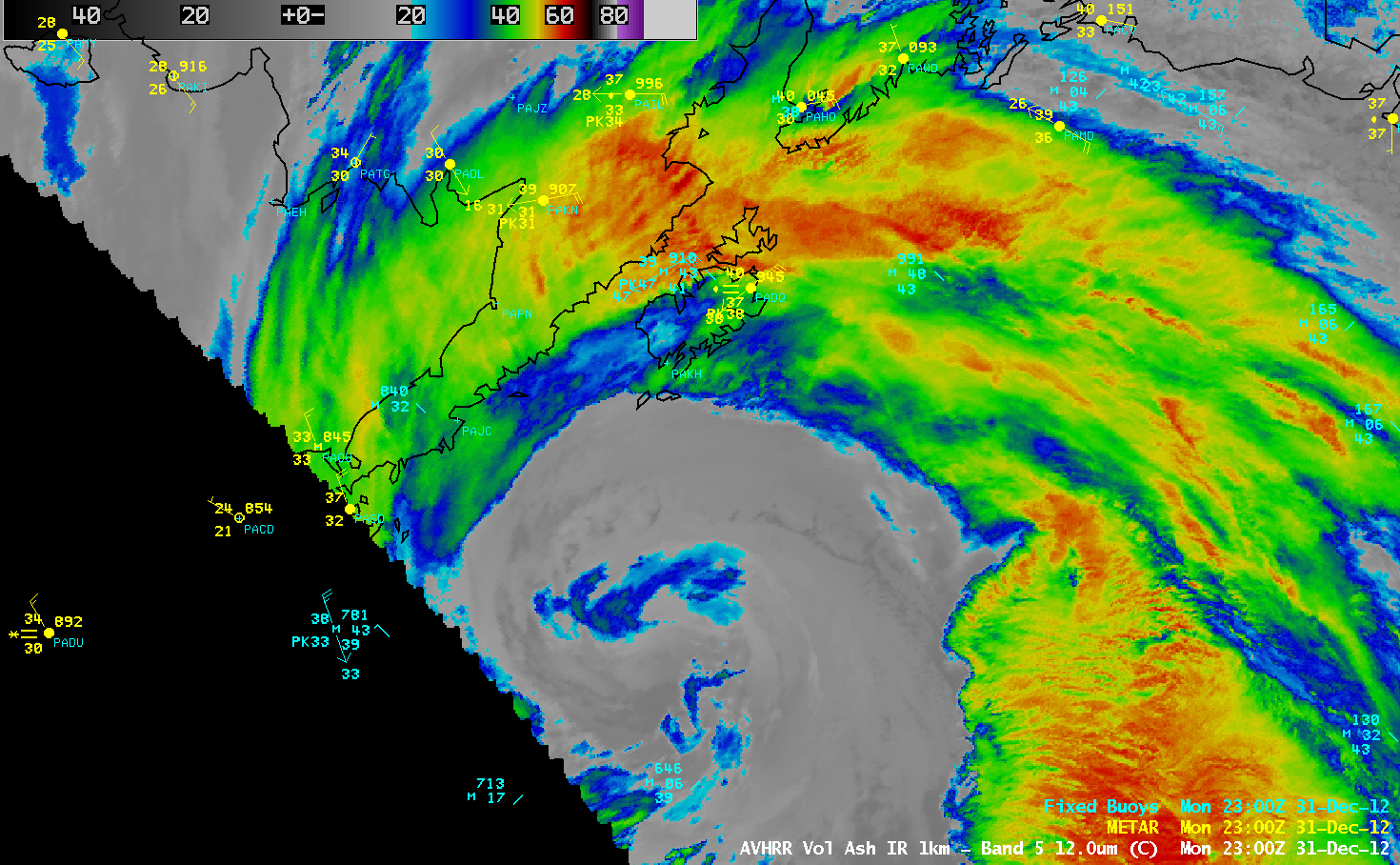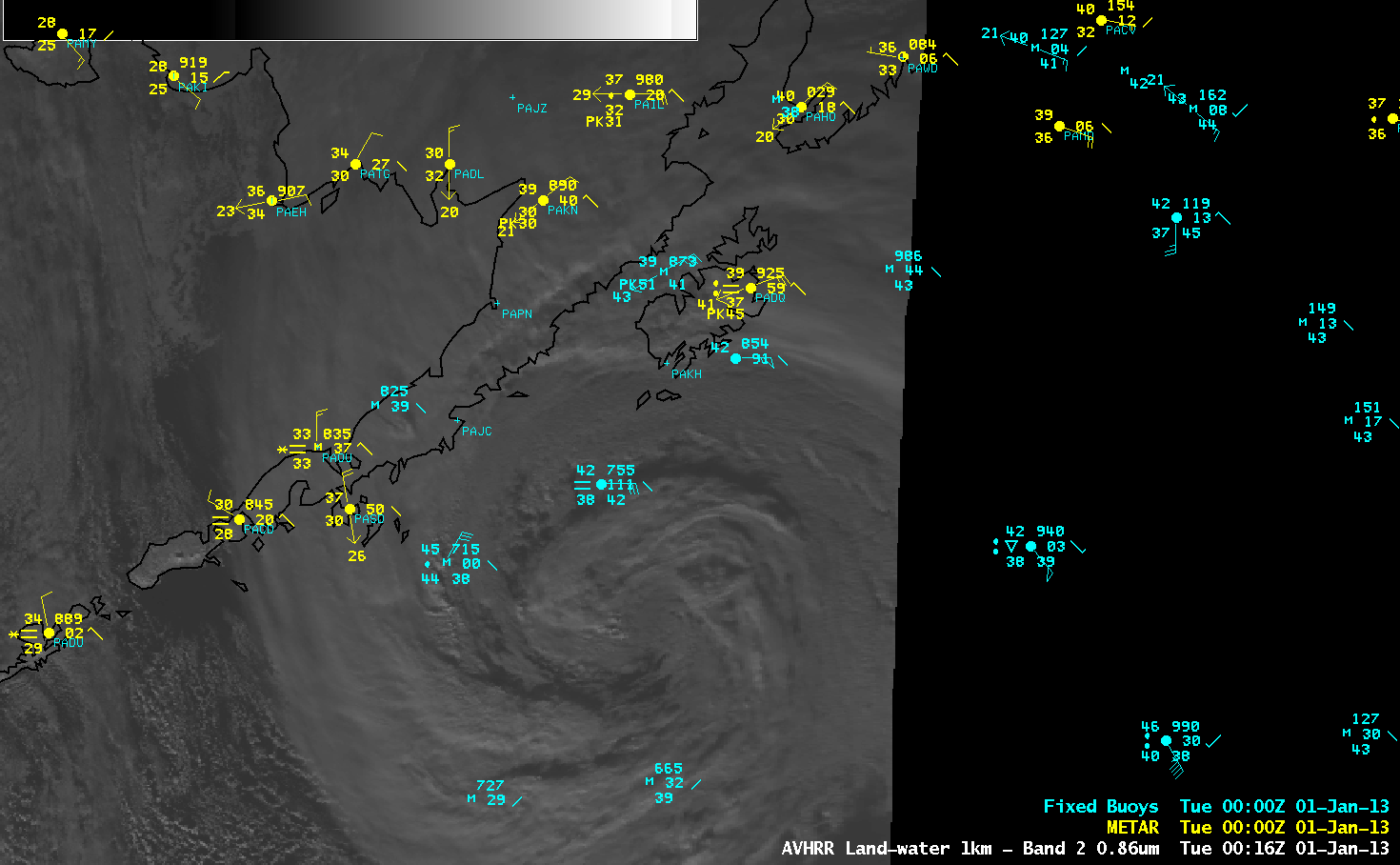Grounding of the Shell Kulluk oil rig off Kodiak Island, Alaska
McIDAS images of GOES-15 6.5 µm water vapor channel data (above; click image to play animation) showed the intensification of a deep low pressure system that was moving northward in the western Gulf of Alaska during the 31 December 2012 – 01 January 2013 period. Strong storm-force winds and high seas associated with this storm played a role in the grounding of the Royal Dutch Shell Kulluk oil drilling rig around 9 PM local time on 31 December (or 06 UTC on 01 January), just off Sitkalidak Island close to Kodiak Island’s southeast shore. PADQ denotes the location of the Kodiak Airport on the northeastern part of Kodiak Island.
A sequence of three AWIPS images of POES AVHRR 12.0 µm InfraRed (IR) data (above) showed the storm as its center was just south-southwest of Kodiak Island. In addition, a comparison of the 01 January 2013 00:16 UTC 0.86 µm visible channel and the corresponding 12.0 µm IR channel images is also shown (below). Surface reports were plotted on the satellite images — the peak wind gust at buoy 46077 located just northwest of Kodiak Island in the Shelikof Strait was 51 knots or 59 mph at 00:16 UTC (3:16 PM local time on 31 December), and ship NZPO located just southeast of Kodiak Island reported a sustained wind speed of 55 knots or 63 mph at 00:00 UTC (3:00 PM local time on 31 December).
A time series of surface report data from Kodiak Airport PADQ (below) indicated that a peak wind gust of 47 knots or 54 mph occurred at 04 UTC and 09 UTC on 01 January (or 7 PM and Midnight local time on the night of 31 December).



